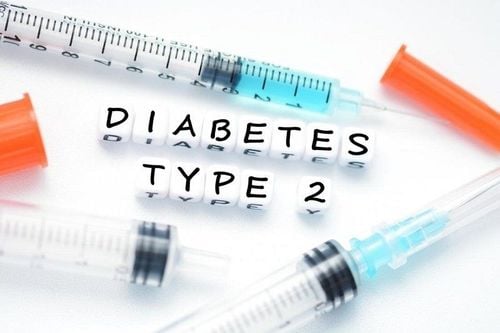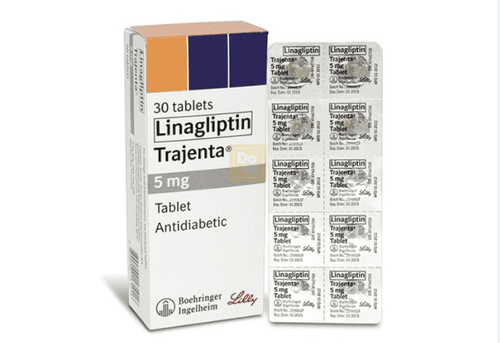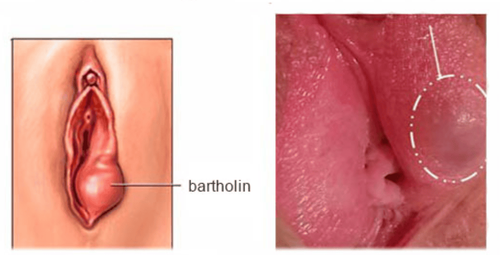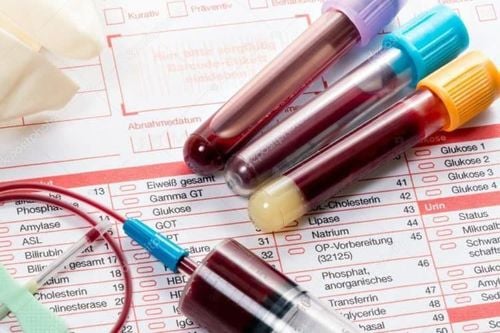This is an automatically translated article.
Posted by CKII Doctor Pham Thi Tuyet Mai - Specialist II Pham Thi Tuyet Mai - Department of Obstetrics and Gynecology - Vinmec Hai Phong International General HospitalGestational diabetes is one of the medical conditions that can be encountered in pregnant women during pregnancy. Accordingly, gestational diabetes can lead to health hazards for both mother and baby. Therefore, depending on the health status of the obstetrician, the obstetrician will consider whether the woman should give birth naturally or by caesarean section.
Gestational diabetes can cause many problems for both mother and fetus has long been proven. However, how mild gestational diabetes affects the fetus and mother is not well understood. The previous definition of gestational diabetes did not allow the distinction of severity. Accordingly, gestational diabetes can range from impaired glucose tolerance to severe hyperglycemia, and is there any difference in postpartum monitoring?
1. What is gestational diabetes?
Gestational diabetes is also known as sugar intolerance that occurs during pregnancy. About 5% of pregnant women experience this disorder and it is common in the second trimester of pregnancy.
To diagnose gestational diabetes at 24-28 weeks, perform a glucose tolerance test, by having the patient fast all night, then test a fasting blood glucose sample the next morning and a blood glucose sample 2 hours later when taking 75g of Glucose. Diabetes is evident if the FPG is ≥ 126mg/dL. Gestational diabetes if: at least one fasting blood glucose sample is between 92-125mg/dL, blood sugar 1 hour after taking 75g glucose ≥ 180mg/dL and or blood sugar 2 hours after taking 75g glucose ≥ 153mg/dL

All pregnant women who have been diagnosed with gestational diabetes or true diabetes during pregnancy should have continued blood glucose monitoring after delivery. Obstetricians should early screen for true diabetes (including fasting glucose and HbA1c) in high-risk pregnant women at the first prenatal visit. At the same time, all pregnant women should check their blood sugar and conduct a glucose tolerance test at 24-28 weeks of pregnancy. Women who have been diagnosed with gestational diabetes or true diabetes during pregnancy should continue to monitor their blood glucose levels after delivery.
Trắc nghiệm: Chỉ số tiểu đường thai kỳ nguy hiểm như thế nào đối với thai nhi?
Không chỉ ảnh hưởng xấu đến sức khỏe người mẹ, tiểu đường thai kỳ còn gây nguy hại đến sự phát triển của thai nhi. Cùng làm bài trắc nghiệm sau đây để hiểu rõ hơn về sự ảnh hưởng của tiểu đường thai kỳ đối với thai nhi như thế nào nhé!The following content is prepared under supervision of Bác sĩ chuyên khoa I, Lê Hồng Liên , Sản phụ khoa , Khoa Sản phụ khoa - Bệnh viện Đa khoa Quốc tế Vinmec Central Park
2. Is gestational diabetes dangerous?
Gestational diabetes has severe consequences for both mother and newborn, increasing morbidity and mortality.
Accordingly, fetuses of pregnant women with gestational diabetes are at risk of:
Having birth defects: heart, nervous system, large blood vessels, bones, urinary tract. Increased perinatal mortality, especially postpartum, due to hypoglycemia, hypocalcemia, and premature delivery. Large fetus over 4,000 grams or underdeveloped fetus. Polyhydramnios or lack of amniotic fluid. Miscarriage or stillbirth. Fetal trauma due to large fetus, difficult delivery. Pregnant women with gestational diabetes are at risk:
Increased risk of complications for the mother such as metabolic disorders, infections, coronary artery damage. Preeclampsia, eclampsia, placental abruption. Difficult delivery, trauma in childbirth Postpartum haemorrhage due to uterine atony. Increased rate of infection Risk of becoming type 2 diabetes later in life. Obesity and excessive weight gain.

Treatment of gestational diabetes aims to control blood sugar actively and safely within a narrow range, to ensure safety for both mother and fetus (Fasting blood sugar < 5.8mmol/l, blood sugar 1 hour after eating is 7.8mmol/l and 2 hours after eating <7.2mmol/l. Also, fasting blood sugar should not be as low as 3.4 mmol). Treatment includes therapeutic nutrition and medication.
3. Can gestational diabetes have a normal delivery?
3.1 Timing of delivery for women with gestational diabetes Based on the results of the examination, the obstetrician will decide when is the best time to give birth to a woman with gestational diabetes. Unless the mother or the fetus. If there are complications, the best time to deliver is at 38-41 weeks to prevent some complications from premature delivery, especially respiratory failure due to immature lungs. However, it is possible to give birth before the 38th week if a large fetus is detected. If the decision is made to deliver early before 37 weeks, the fetal lung development must be taken into account by testing the amniotic fluid.
3.2 Should have vaginal delivery or cesarean section for women with diabetes If it is predicted that fetal lung maturity, the choice for women to deliver by any means is the same as for women without diabetes pregnancy. However, if clinical examination and ultrasound show that the fetus is large, consider a cesarean section to avoid the risk of shoulder dislocation or trauma during lower birth.
Women with gestational diabetes who do not have an obstetric indication are still monitored for vaginal delivery because the risks to the mother will be lower when the lower tract is delivered. During labor, it is still necessary to continue to monitor the fetal heart rate and regulate blood sugar. The mother's blood sugar during delivery should be controlled < 6.1 mmol/l, if it is above 8.3 mmol/l, the possibility of fetal hypoxia will be high.

4. Notes when giving birth to mothers with gestational diabetes
Possible risks in the newborn in the first week postpartum with women with gestational diabetes. Specifically as follows:
Acute respiratory failure
Children of mothers who do not have good blood sugar control are at high risk of acute respiratory failure due to immature lungs, often severe illness and high mortality . Children with acute respiratory failure often breathe very fast over 60 times / minute, wheezing, pulling the chest and abdomen, cyanosis... the treatment is quite complicated, but today there are a number of methods with successful results. good.
Hypoglycemia
Newborns can have low blood sugar within the first 48 hours after birth, blood sugar can be as low as 1.7 mmol/l. This is due to the hyperinsulinemia that persists after delivery. Often the child is comatose rather than agitated, and hypoglycemia may be associated with apnea, or tachypnea, cyanosis, or convulsions. Prevention is by giving sugar water or through a nasogastric tube about 1 hour after birth, if this method is not successful, give intravenous glucose infusion.
Some other disorders are hypocalcemia, hyperbilirubinemia (causing jaundice), polycythemia vera and poor appetite.
All patients with gestational diabetes need to be actively treated for good glycemic control during pregnancy. In addition, the fetus needs to be regularly monitored to detect abnormalities and risks affecting the fetus's development early, so that doctors can plan timely and effective interventions. best.
Vinmec International General Hospital offers a Package Maternity Care Program for pregnant women right from the first months of pregnancy with a full range of antenatal care visits, periodical 3D and 4D ultrasounds and routine tests to ensure that the mother is healthy and the fetus is developing comprehensively.
Pregnant women will be consulted and checked for health under the close supervision of experienced and specialized Obstetricians, helping mothers have more knowledge to protect their health during pregnancy as well as reduce reduce complications for mother and child.
Customers can directly go to Vinmec Health system nationwide to visit or contact the hotline here for support.















